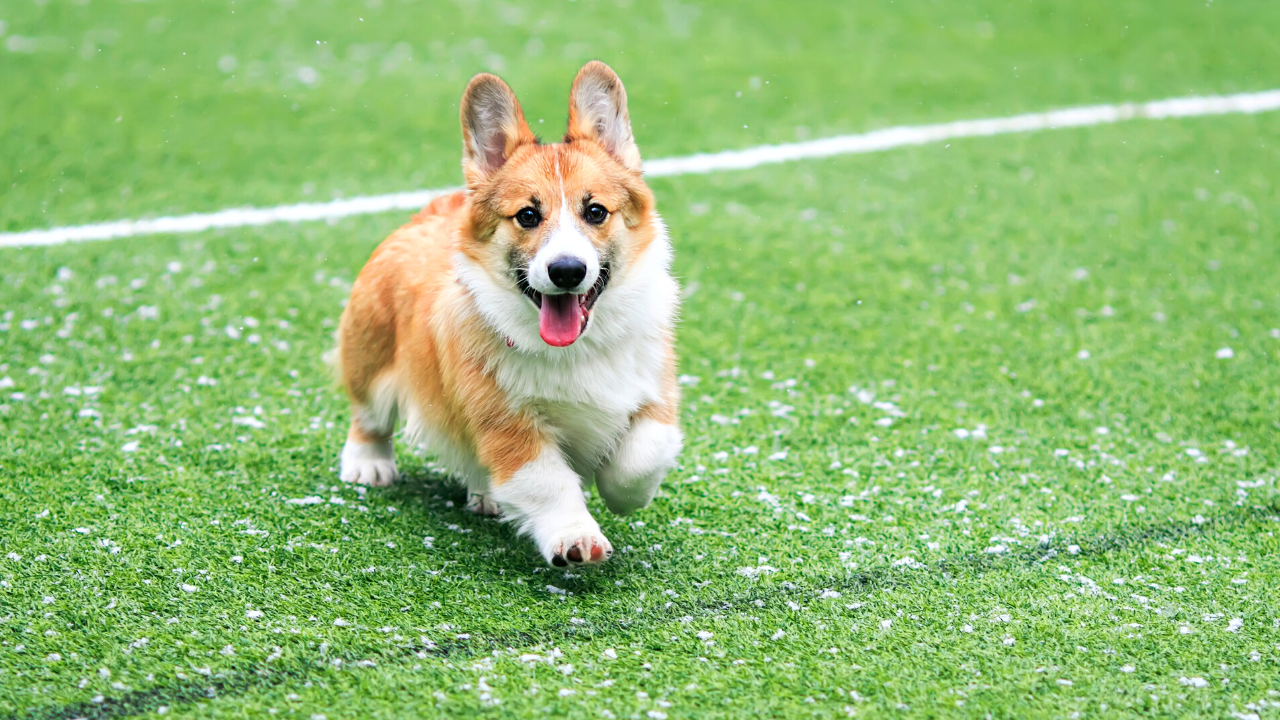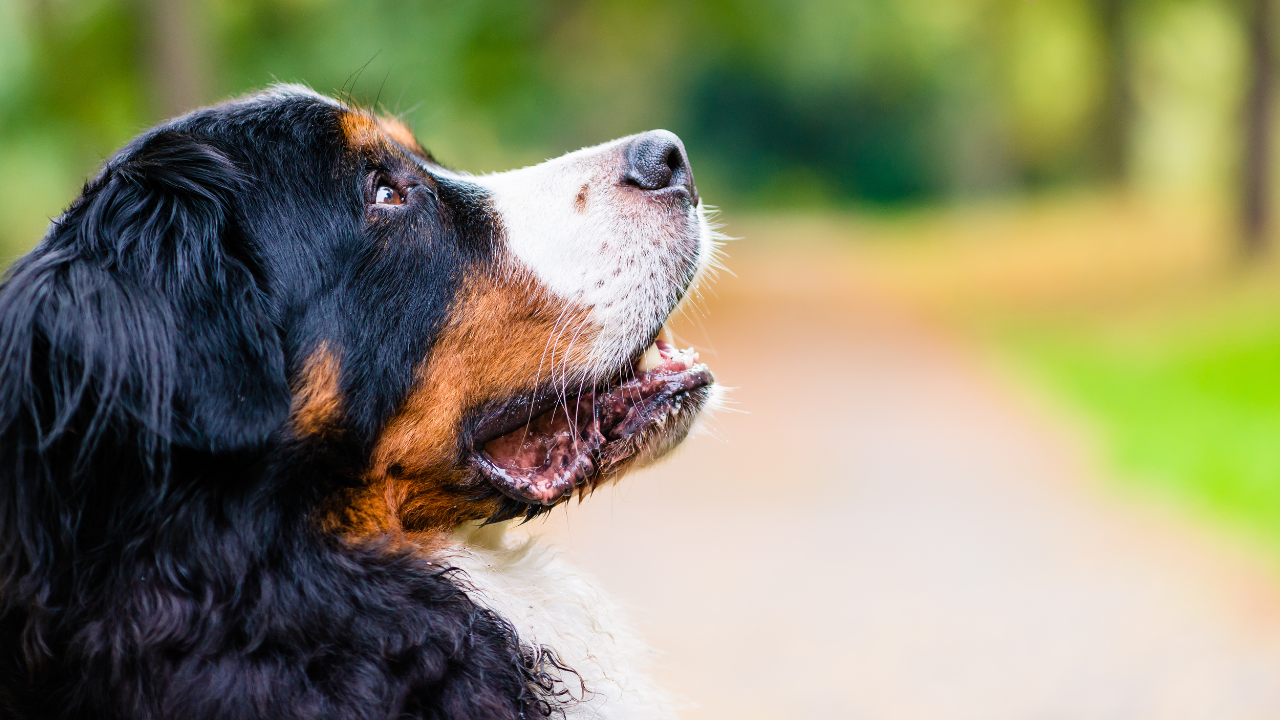The Choice Conundrum: What to do when choice conflicts with wellbeing

By Michelle Dart
When it comes to implementing true choice in training, it is easy to see how this might work at home but what about in other, more complex, scenarios?
At home we can create a safe space where our dog gets to be off lead and is freely able to choose to enjoy their snuffle mat, toys or kong at any point, but what does this look like in a park scenario, for example, where there are children playing football? In this instance it wouldn’t be safe or desirable to let our dog run over to the children so what are our options for choice?
Although for our dog’s safety and the wellbeing of those around us, we can’t let them choose to run toward every person or join in football games, this doesn’t mean we can’t provide other choices.
So let’s rewind a little and remind ourselves of what choice is…
When it comes to training, true choice means that our dogs are able to opt in and out of working with us, and have access to rewards whether they choose to engage with us or the environment (see here for our previous blog looking at this in more detail).
The act of opting out of working with us is celebrated as much as opting in because it teaches our dogs important skills such as emotional self regulation, allows for cognitive processing and means that the quality of interactions when our dogs do opt in is far better.
In a true choice based training session success is not determined by whether our dog does the specific task we’re working on, but by looking at the journey as a whole and the emotional impact on our dog throughout.
So let’s look at the football scenario again.
In this situation the goal is to be able to walk through a park and have our dog happily walk next to us and choose to ignore the distraction of the football game. Success is task related - does our dog walk past engaging with us (successful) or do they pull towards the football game (not successful)?
Choice based training doesn’t mean we can’t have training goals but we need to be honest about what we’re trying to achieve and, when choice in one area is unavailable, look at how we can introduce choice elsewhere in the situation to ensure our dog’s needs are being met and they can tell us when things are too much.
In these situations where full choice to engage with the environment is not an option we need to think about choice differently. How can we add choice into situations where the goal is to proof a behaviour in the presence of distractions that our dog can’t choose to interact with?

What other choices are there?
It might seem as though proofing and choice based training are at complete odds with each other. In one context we have dogs freely able to access rewards they choose from the environment and in the other we are actively not allowing our dogs to choose to access the distractions. Whilst this is true, it doesn’t mean that true choice isn’t available.
One option would be to enable our dogs to choose when the proofing game starts. We can teach our dogs that they can’t have access to the distraction but they can control when the distraction appears. This means we can create a context that allows communication and choice in this scenario.
Of course we also need our dogs to have a way to tell us if things are too much and they want to opt out. In this way our dogs can tell us when they are ready to begin and when they want to stop.
In terms of what these signals are, we can either train something specific as a start signal and something different as a stop signal, or we can look to see what our dog naturally does and then create the context by responding consistently when they offer that behaviour.
Before we can take our training to the real world and have our dog communicate with us reliably, we first need to build up in smaller steps in a controlled environment.
We can start at home with small distractions such as our dog choosing to focus on us when a ball comes into view or rolls across the ground and build up gradually to scenarios where friends kick the ball around. How many steps are needed depends on each individual dog as this will be harder for some dogs than others and we should tailor our plans accordingly. But throughout the training we want to be consistent with listening to the start and stop signals our dog is giving us.
So how does it work?
Let’s look at an example and use a nose touch as the start signal and a sit as the stop signal. In this situation our dog offers a nose contact to let us know they are ready. We then bring the distraction into the environment and reward our dog for engaging in the activity we’re training. After we’ve rewarded our dog, the distraction goes away again until our dog signals for us to start again.
If during the exercise our dog gives us the stop signal - in this example sits - we put the distraction away. If we have people acting as distractions, we get them to stop what they’re doing and move away. It’s important to always reward our dog for opting out! We can also provide additional activities, like snuffle mats, chew items or toys, to help our dog decompress if they need to. After this we then wait for our dog to give us their start signal before we begin training again.
How does this work in the real world?
When we’ve built up to the stage our dog is ready for the real world we still want to allow them choice in the moment. We can let our dog watch the distracting scenario from a distance first. After they’ve had a chance to process, we ask them if they’re ready and wait for their start signal. Then we can train, rewarding them throughout. But if they give us their stop signal we must stop training and move away to a place our dog is comfortable, giving them a chance to engage in activities which help them decompress.
Training in this way will ensure our dogs are always wanting to engage in the process and avoid accidentally putting pressure on our dogs to meet our own goals.
For me, success in learning is that our dogs truly want to be working with us and that we are moving at a pace that suits them. The more we can get away from success being about what task we have achieved or how quickly we have reached our goal, the more we can focus on what really matters - the experience of the incredible beings we are communicating with.



